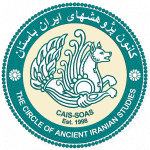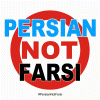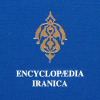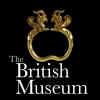
![]()
CAIS
The Circle of Ancient Iranian Studies
Follow us on

|
CAIS ARCHAEOLOGICAL & CULTURAL NEWS© ARCHAEOLOGICAL & CULTURAL NEWS OF THE IRANIAN WORLD |
|
Iran’s Last Zoroastrians Worried by Youth Exodus
|
|
06 October 2006 |
By Hiedeh Farmani
LONDON,
(CAIS) -- Flicking through photographs of immigrant Zoroastrian friends in sunny California, 40-year-old Farzad Dehnavizadeh sighs and wishes the young people of his faith stopped leaving Iran for the West. His 40,000-strong Zoroastrian community has survived centuries of conquest, oppression and forced conversion to keep their 3,200-year-old monotheistic faith alive and guard ancient traditions in Shiite Muslim majority Iran. But having withstood the ravages of history, the community is now threatened by emigration, which is robbing the Zoroastrians of their precious youth day-by-day. Precise figures of the scale of the exodus are not available but sources in the community estimate that at the very least hundreds of young Zoroastrians are leaving Iran for the United States or Canada every year.
Some of the resettlement has also been encouraged by a US program for religious minorities-the HIAS (Hebrew Immigrant Aid Society), which originally facilitated the immigration of Jews. “I am very sad that they are leaving, their second generation will have no idea of Iran and Zoroastrian culture,” said Dehnavizadeh, a successful Zoroastrian engineer and an active member of his community. “I do not like the term ‘religious minority’ for us. Iran can be home to all world Zoroastrians,” he said of some 200,000 followers of the Zoroastrian prophet Zarathustra. Following the Arab invasion in the seventh century AD a large number of Zoroastrians fled Iran, where the faith had been national religion, and settled in India, where they were tolerated and became known as “Parsis”.
Ever since, Zoroastrians have had “lots of ups and down, but managed to preserve their religion,” said Dehnavizadeh, who takes young educated fellow believers under his wings at the private company where he works. Throughout history they have had to fight off stereotypes wrongly labeling them as fire-worshippers-although fire appears in their rituals and temples symbolizing life, growth and purity. Iran’s Zoroastrians are given the same rights in the constitution as Christians and Jews. They have their own representative to the parliament, can freely practice their religion, go to college, own businesses and property. However, they are not allowed to be army officers-despite being required to do the two-year military service-or run for president and say they face obstacles for promotion in the state sector.
But these are not “as bad as the shrinking of our community,” said 44-year-old Susan Afshari, attending the Mehregan, a pre-Zoroastrian pagan festival in early October, marking the autumn equinox and honouring the ancient Persian angel of love, Mithra. “We are the guardians of such traditions and feasts, if we leave, who is going to keep them going in Iran?” said Afshari, who has a sister living in the United States. Watching a group of young girls dancing to ethnic Azeri music on the stage, she hopes they grow up to “be proud Iranians and be as attached as we are to this land.” But according to 30-year-old Babak Mostaqni “many leave for more freedom and better employment and education opportunities. If my Muslim friends had the chance, many of them would go too”. Although not banned under their religion, inter-faith marriages are frowned upon among Zoroastrians, who have stuck to their own kind “for the sake of survival and keeping the culture pure”. Under Iranian law, people of other faiths cannot marry Muslims unless they convert, and when a Zoroastrian converts “he becomes a leper, an outcast, and even his family becomes isolated”.
On the other hand when Muslims leave Islam for another religion, they become apostates and punishable by death. “But the heart tells you who to marry and it has nothing to do with religion or race,” said Mostaqni, who would not mind marrying a non-Zoroastrian if he were not in Iran. The hall is packed with more than a thousand Zoroastrians with their signature olive skins and jet black hair. Muslims can attend the feast too, provided a friend vouches for them and their names are listed. But 28-year-old Shabnam, who would only give her first name, has negotiated her way through and is filming a table decorated with fruit, grains, pumpkins, sweets and scales that symbolize equality of classes and genders. “I am a practicing Muslim but I am keen on our ancient culture too and Mehregan should be a national feast, like Noruz (the Iranian New Year). It has nothing to do with religion,” she said. A self-described nationalist, she thinks Mehregan “could perfectly replace Valentine’s Day that young people have ignorantly adopted in the past years”. “I am going to show this film to my friends; they would have liked to be here,” she said, turning her attention to an academic talking about ancient Persian influences on world culture
|
Extracted From/Source: AFP Please
note
the above-news is NOT a "copy & paste" version from
the mentioned-source. The news/article above has been modified with
the following interventions by CAIS: Spelling corrections;
-Rectification and correction of the historical facts and data; -
Providing additional historical information within the text; -Removing any
unnecessary, irrelevant & repetitive information. All these measures have been taken in order to ensure that the published news provided by CAIS is coherent, accurate and suitable for academics and cultural enthusiasts who visit the CAIS website.
|
|
|
|
Persian NOT Farsi
Encyclopaedia Iranica The British Institute of Persian Studies The British Museum The Royal Asiatic Society of Great Britain and Ireland
|









